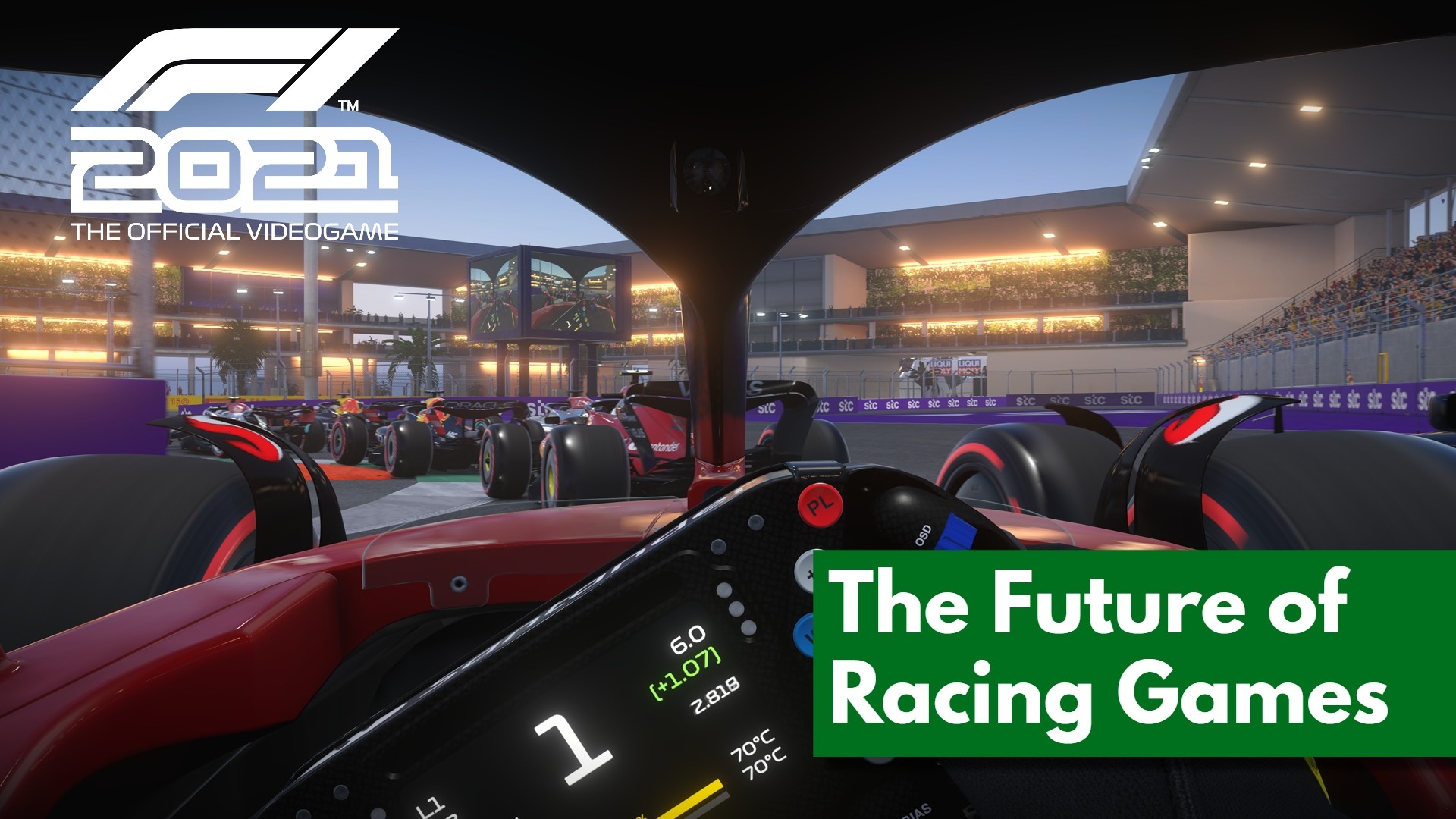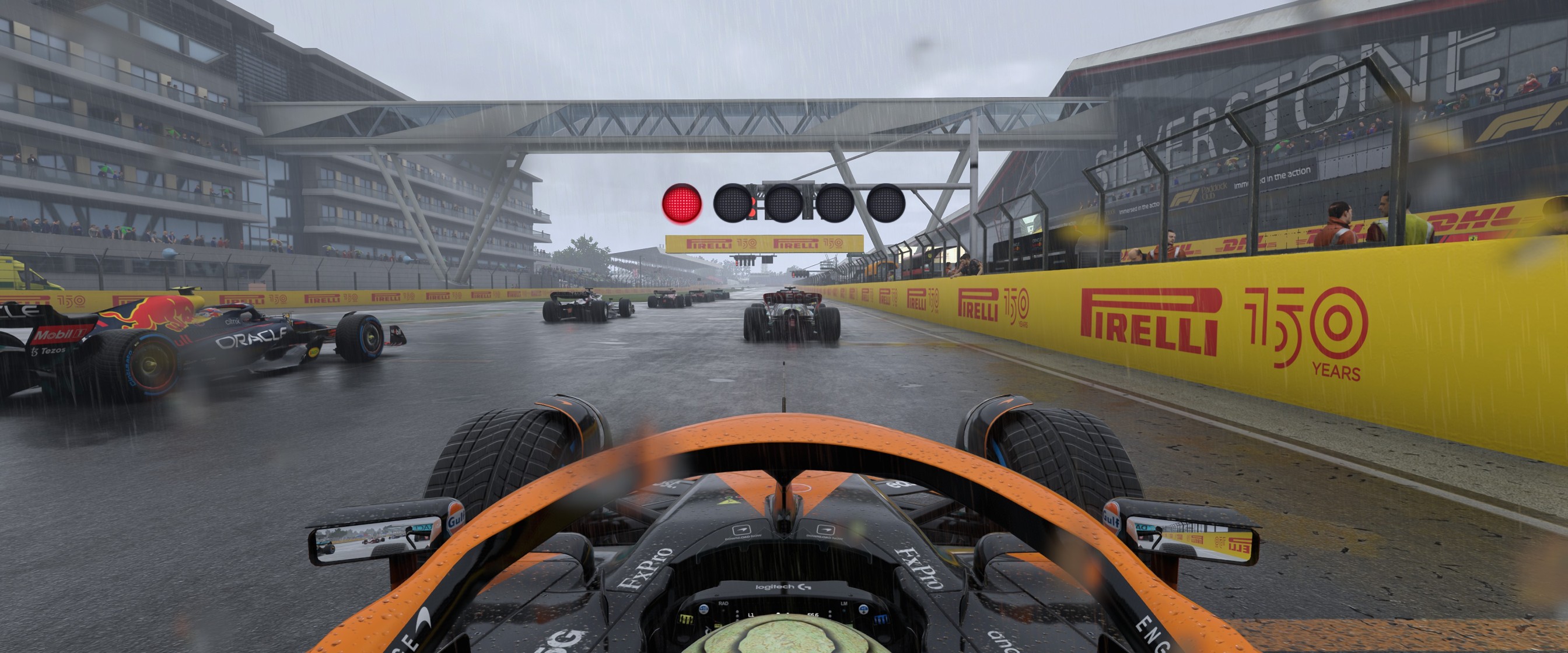F1 22 on PC is a Glimpse at the Future of Racing Games
Post by KostaAndreadis @ 04:08pm 18/07/22 | Comments
With a suite of real-time ray-tracing effects making their way into each race, not to mention the addition of VR, F1 22 offers a glimpse at the visual future of racing games.

Codemasters’ F1 22 continues to see the digital take on realistic sim-like Formula One racing hit new heights. From improved AI to support newcomers and pros alike, handling and other physics getting a refresh, and all of the new car specs and designs that make up the real-world sport here - it’s another stellar release.
And as the only way to jump into the 2022 FIA Formula One World Championship without spending a lifetime training and then signing a deal with McLaren to drive a multi-million dollar vehicle at break-neck speed, it’s impressive just how great it all looks. Realistic driving simulations (accessible ones at that) have been a part of the gaming landscape for decades, and striving to hit that realism has led to a number of innovations and advancements making their way into the driving games we play.

And it all comes down to what’s possible with modern ‘of the moment’ hardware. F1 22 is no different, though its use of real-time ray-tracing is worth digging into as it points to a future where the highly impressive tech will become an integral part of the racing genre at large. As a hardware intensive bit of light calculation, ray-tracing is all about simulating the way real-world light behaves to create more realistic shadows, reflections, and other effects without the need to fake it.
Realistic driving simulations (accessible ones at that) have been a part of the gaming landscape for decades, and striving to hit that realism has led to a number of innovations and advancements making their way into the driving games we play.
The intensive bit is key, as real-time ray-tracing in a racing sim has usually meant limiting the effects to the sort of beauty-based photo modes found in the likes of Forza Horizon 5 and Gran Turismo 7. In F1 22, the ray-tracing effects are enabled in-race, covering high-fidelity opaque reflections, transparent reflections, ambient occlusion, and shadows. It’s quite the suite of impressive effects, but before we break down what they bring to the visual table it’s worth talking about the other half of the question, performance.
Racing with all of these effects turned on in 4K, even with a GeForce RTX 3080, and the performance sits well below 60-fps. Which for an F1 game is not ideal, as speed, precision, and quick reactions are the name of the game when you’re taking corners at well over 100 km/hour. This is where, for the GeForce RTX line, DLSS comes into the picture. As seen in everything from Cyberpunk 2077 to this year’s Dying Light 2: Stay Human, the AI-based rendering tool allows for a massive boost in performance to ensure that a game’s fps stays inline with the visual detail.
It makes the seemingly impossible (that is performance killers) possible. In F1 22, we get to see an impressive slice of DLSS implementation, where in 4K the performance effectively doubles without sacrificing visual quality. Letting you race, and take in all of the RTX action at over 60-fps.

When it comes to ray-tracing, the most immediate and instantly noticeable difference comes with how it dramatically changes reflections. Without ray-tracing reflections can only display what’s currently on-screen (or a rough reflection map), and with ray-tracing you get to see cars reflected on a glass pane or window as they drive by. Even when they're not directly on screen. With multiple forms of ray-traced reflections present in F1 22 you not only get to see what’s in your rear-view mirror but also the track, environment, and other materials reflect off of the shiny and impressive cars you drive. Watching all of the different light-sources and reflections bounce off of the body of a high-end Mercedes or Alfa Romeo is incredible to see in motion.
With multiple forms of ray-traced reflections present in F1 22 you not only get to see what’s in your rear-view mirror but also the track, environment, and other materials reflect off of the shiny and impressive cars you drive.
This is one aspect, alongside the realistic ray-traced shadows (which accurately create shadows based on the sun and other light sources), that adds a dose of realism to F1 22. Watching the above replay of the improved and updated Albert Park in Melbourne, it’s like watching the real thing whilst also being able to take part and race. With F1 22 adding the new Miami International Autodrome into its track line-up, this is another example of just how much realistic lighting adds to a broader picture that includes highly detailed car models, realistic recreations of real-world locales and tracks, great AI, and witnessing the bustling nature of driving into a Formula One pit-stop.
The final bit of real-time ray-tracing present in F1 22 covers ray-traced ambient occlusion, which is how a game handles things that aren’t in direct light. This is usually where an object meets the ground or intersects with another object, and by having light and shadow here look realistic it removes the feeling of something “looking like a game” where objects stand-out, feel out of place, or look like they’re floating. Being able to race during the day, at night, or even in the rain, there’s a uniformity and realism found throughout F1 22’s visuals thanks to ray-tracing. And as an annual series, it sets the benchmark for all realistic racing sims going forward.
And when you add in VR, a first for the franchise in F1 22, it’s safe to say that developer Codemasters has really pushed the visual tech forward with this latest instalment. VR is one of those things that you have to witness in order to “get”, and the implementation here is truly next level thanks to the visuals found in the core experience. Driving from first-person in the seat of a Formula One car is VR bucket-list level stuff, and one more element that makes F1 22 a glimpse into the future of racing games.
Latest Comments


















